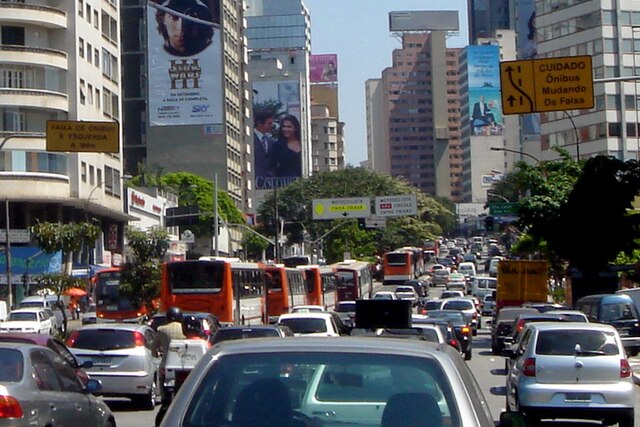Transport economics is a branch of economics founded in 1959 by American economist John R. Meyer that deals with the allocation of resources within the transport sector. It has strong links to civil engineering. Transport economics differs from some other branches of economics in that the assumption of a spaceless, instantaneous economy does not hold. People and goods flow over networks at certain speeds. Demands peak. Advance ticket purchase is often induced by lower fares. The networks themselves may or may not be competitive. A single trip may require the bundling of services provided by several firms, agencies and modes.
This picture illustrates a variety of transportation systems: public transportation; private vehicle road use; and rail
Typical traffic congestion in an urban freeway. Shown here is I-80 Eastshore Freeway in Berkeley, California.
Electronic Road Pricing Gantry at North Bridge Road, Singapore
Traffic congestion persists in São Paulo, Brazil, despite no-drive days based on license numbers.
Area C is a congestion charge active in the city center of Milan, Italy. It was introduced in 2012, replacing the previous pollution charge Ecopass and based on the same designated traffic restricted zone. The area is about 8.2 km2 (3.2 sq mi) with 77,000 residents and is accessible through gates monitored by traffic cameras.
Area C gate in Porta Ticinese





